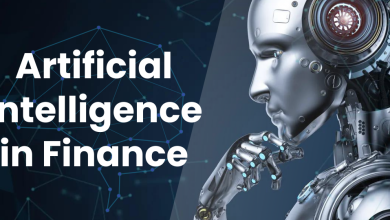
Generative AI has transformed the digital marketing industry, including the ways advertisers connect with their consumers. Now, a new and more sophisticated way of using AI is becoming available: AI agents. An AI agent (or, agentic AI) is an AI system capable of performing downstream actions and making decisions associated with such actions autonomously. While a generative AI chatbot can respond to a human user’s prompt with words or images, an AI agent’s capabilities are far greater, allowing the AI system to interact with other systems (AI-based or otherwise) to achieve its requested goals without further human involvement.
Agentic AI’s potential for making autonomous decisions creates new levels of complexity – operational, technical, and legal. Notwithstanding, the rise of agentic AI has the capacity to change myriad industries, including digital marketing. Studies have estimated that by 2028, sixty-eight percent of customer service and support interactions with vendors will be handled by agentic AI, and by 2028, one-fifth of marketing roles will be held by AI agents. Consumers will also rely on agentic AI to make purchasing decisions, and digital marketers will need to adapt their marketing strategies to better communicate with AI agents acting as the decision makers.
While 94% of surveyed organizations across various jurisdictions already use AI to prepare and execute marketing campaigns, agentic AI has the potential to play a more influential role. According to some estimates, ten percent of organizations are currently experimenting with AI agents, and that number is poised to grow exponentially. The developing role of agentic AI has the potential to upend consumer habits and change how digital marketers approach their campaigns.
Background on Marketing Techniques
Current marketing involves the use of a marketing technology (“martech”) stack, which refers to a marketing ecosystem used by advertisers to market products and services. Martech tools include customer relationship management software that tracks customer interactions and data; search-engine marketing and optimization; and platforms that automate the sending of emails and text messages to potential and existing customers. Advertisers use these technologies to guide consumers through the marketing funnel (i.e., the consumer’s interactive journey through four stages: product awareness, evaluating purchase options, making a purchase decision, and eventually brand loyalty). Advertisers rely on martech stacks to attract, inform, convert, and engage consumers. But as generative AI has crept into the marketing landscape, advertisements have become increasingly personalized, and agentic AI has the potential to further disrupt the martech stack by creating and deploying innovative marketing strategies that rely less on human input.
Intro to Agentic AI
The key difference between generative and agentic AI is the level of autonomy and access of the AI system to other systems. In digital advertising, generative AI has been used, among other things, to develop content, create personalized recommendations based on users’ input, and answer customer questions through chatbots. Coca-Cola, for example, utilized generative AI to create advertisements for its Masterpiece advertising campaign. Generative AI also has the capability to analyze vast amounts of data, including customers’ purchase histories and website interactions, and synthesize that data to recommend products or advertisements. Adobe Target, for example, allows businesses to identify which advertisements best resonate with their target customers before the ad reaches a user’s screen.
Agentic AI can also make real-time decisions on how to serve advertisements. Unlike generative AI, agentic AI can do so with less human involvement and operate autonomously once deployed. Guided by the goals of human programmers, agentic AI uses multiple foundation models, databases, the web, and other systems to execute its user-set goals.
Potential Impact of Agentic AI on the Digital Marketing Industry
Agentic AI has already been incorporated into online platforms to collect information from across the internet, synthesize it, and provide recommendations to users (ranging from recommendations regarding which product to buy or which hotel to book). Examples include Google’s Project Mariner and Perplexity AI’s “Answer Modes.” Although Mariner’s recommendations to book a certain hotel or buy a certain product are subject to a human user’s decision to transact, platforms like Mariner expedite the traditional marketing funnel and will eventually eviscerate it. With agentic AI, the marketing funnel’s emphasis on product awareness, evaluating purchasing options, and brand loyalty is no longer as important. Consumers can easily ask an AI agent to assist with their purchasing decisions without the need to enter a retail store, visit a website, or speak with a person.
Advertisers will have to alter their traditional marketing methods to appeal to the agentic AI systems that will be used by consumers to make many autonomous purchasing decisions. While many view generative AI as a black box, the process by which AI agents make purchasing decisions is even more opaque. For example, what factors will the agentic AI rely on when suggesting that a user book (or autonomously booking) a certain hotel? Will its decision-making be limited to parameters dictated by the human user (e.g., price, location, and number of stars)? All things being equal, what will be the determining factor in a purchasing decision? Does an AI agent even have the capacity to enter into binding contracts? These uncertainties will likely lead to changes in advertising techniques, especially reliance on the martech stack. Just as the marketing funnel will be simplified on the consumer side to reduce research time and exposure to different brands, it will be altered on the advertisers’ side with respect to attracting customers and informing them about products. Agentic AI will allow advertisers to refine their methods by creating more personalized advertising. By some accounts, agentic AI already has the ability to alter advertising in real time, based on a consumer’s interactions with advertisements.
If AI agents become the principle decision makers for purchases, advertisers will need to focus on how to best appeal to the AI system. This shift will likely mean a decline in emotional advertising over the long term, because AI systems (presumably) will not be persuaded by tear-jerking commercials or bright-colored banners. Some studies suggest that AI agents are drawn to well-structured on-page information (like ordered lists, guides, and definitions), conversational text (such as blogs and external reviews and forums), and publications cited in external media (to validate claims on an advertisers webpage) instead of webinars, embedded images, or disorganized webpages. This dynamic is possibly due to AI agents’ heavier reliance on language model components than on other foundation models at critical junctures in the decision process.
Legal Issues: Affiliate Marketing & Contractual Implications
The rise of agentic AI also raises a host of legal issues relevant to the marketing industry, two of which we address here. The first is whether agentic AI systems can enter legally-binding contracts on behalf of a purchaser. The second is whether agentic AI systems that aid in purchasing decisions qualify as affiliate marketers, which would then be subject to disclosure under Federal Trade Commission regulations.
Based on principles of agency law and interpretations of several federal laws, agentic AI agents likely have the ability to enter legally-binding contracts on behalf of their users. Under the principles of agency law, an agent acting with actual or apparent authority can bind a principal to a contract with a third party. Arguments for classifying AI as an agent draw a parallel between decisions classifying software as an agent. Whether it be software or agentic AI agents, the user has to access the system and instruct it to act on its behalf, and as such, one can infer there should be legal consequences for the principal. Problems will inevitably arise in determining whether the AI is acting within the scope of its authority, which may depend on both the design and protections built into the AI agent as well as the applicable terms governing its use. Regardless, it would be difficult to argue that a user who instructs an AI system to execute a purchase did not intend to be bound by that contract.
Federal laws, including the Electronic Signatures in Global and National Commerce Act (ESIGN), and generally-adopted state frameworks like the Uniform Electronic Transactions Act (UETA), confirm that AI agents can enter binding contracts. Both ESIGN and UETA address electronic signatures and records, granting them equal legal validity as paper-based transactions and records. Both approve of an electronic system’s ability to enter a binding contract, with the drafting notes of the UETA specifically addressing the potential for electronic agents to be powered by artificial intelligence. Whether that electronic system, or AI agent, affixes a signature to a contract or enters a contract by purchasing an item online, both ESIGN and UETA say that “contracts can be formed by machines functioning as electronic agents for parties to a transaction.” Several state statutes go even further, stating that a contract is still formed “even if no individual was aware of or reviewed the electronic agent’s actions or the resulting terms and agreements.”
Courts have already applied these principles to other electronic or automated transactions to hold users responsible for the actions of electronic systems. For example, courts have already found that ATMs and computer systems are capable of binding a party who chose to transact electronically. Enforceability of such contracts ultimately depends on the scope of authority granted to the agent and whether the agent’s actions fall within that scope.
It remains unanswered whether influencer/affiliate marketing regulations require disclosure by agentic AI systems, or those who own or operate them, when the agent or owner is paid or otherwise compensated to promote a product on behalf of a brand. Influencer/affiliate marketing occurs when companies contract with third parties to advertise their products. Often, the process includes a personalized “affiliate link” provided by the brand to the third party, who then directs consumers to purchase products through such link. The brand, in turn, tracks sales based on which consumers use that link and pays the influencer/affiliate a commission.
In the AI context, AI agents could act in place of influencers/affiliates and be compensated by the brand for sales that they originate. FTC regulations require endorsements to be honest, not misleading, and include a “clear and conspicuous disclosure” of a material connection between the endorser and the seller of the product or service. A clear and conspicuous disclosure must be one that is understandable to the average consumer and easy to find. If an AI agent is coordinating with, and being compensated by, an advertiser, such relationship likely falls within the scope of these FTC regulations and should be disclosed (e.g., through a disclaimer accompanying the product recommendation). Marketers cannot compensate those who operate AI agents and escape FTC regulations.
If the AI agent is not being compensated by the brand, such regulatory concerns disappear, as there is no “material connection” between the AI agent and the brand. The tricker question is what happens when if the AI agent is being compensated by the advertiser and is making the purchasing decisions autonomously within certain pre-defined parameters (e.g., buy me the best TV for under $300)? How and when will the consumer be notified of this affiliate relationship? These are thorny questions that should be addressed by brands in order to heed off any regulatory enforcement actions.
Conclusion
Although agentic AI provide an emerging service to both consumers and marketers, much practical and legal uncertainty remains. Current law suggests that AI agents can, in fact, enter into binding relationships on behalf of consumers. Once a consumer directs the AI agent to purchase the “best vacuum” or book a vacation to the Caribbean, the consumer has accepted the consequences that stem from that relationship. Likewise, when a system coordinates with, and is compensated by, advertisers, FTC regulations suggest that disclosure is legally required. Brands and purveyors of AI should be mindful of these issues when crafting their policies, procedures, and legal agreements. And, trade groups representing members of the digital advertising ecosystem should consider preparing strategies and principles for self-governance if they wish to shape the nascent regulatory environment.





